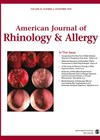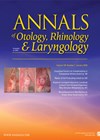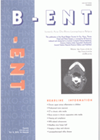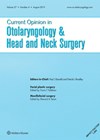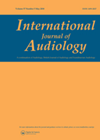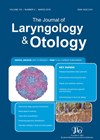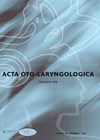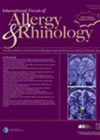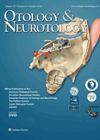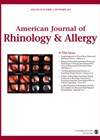
Journal Reviews
An alternative view and access point
Fungal sinusitis is a common problem and it is well recognised that it can be difficult to remove all of the fungal matter from the maxillary sinus to ensure no recurrence or residual disease. This study describes a technique utilising...
Rhinotillexomania - how bad can nose picking get?
This is a fascinating first case report of rhinotillexomania associated with empty nose syndrome (ENS). Rhinotillexomania encompasses compulsive, pathological nose picking and is a variant of self-harm. Tranchito and Chhabra describe an elderly patient presenting with longstanding symptoms of nasal...
Closure of septal perforations
This Belgian retrospective observational study looked at the success rate and predictive factors for success when bilateral advancement flaps were used via an external approach. In total, 111 patients were included in the study over a 16-year period. The mean...
Inverted papilloma
This Croatian study aimed to look at risk factors associated with malignant transformation and recurrence in 91 cases in a single institution over a 20-year period. There were 66 men and 25 women included in the study. The authors reported...
Patient factors associated with spontaneous CSF leak
This article highlights the role of obesity, sleep apnoea and raised intracranial pressure as linked pathologies in the aetiology of the spontaneous cerebrospinal fluid (sCSF) leak. The authors link sCSF leak with obesity and comment on sCSF leak incidence increasing...
Speech in noise hearing difficulties
The phenomenon of speech understanding in noise in normal hearing people attracts the interest of researchers continuously. This study’s aim was to further explore the possible reasons behind these difficulties. The participants were 50 adults that reported having normal hearing...
Is posterior epistaxis really ‘posterior’?
In absence of any clear bleeding points seen on the septum, it is generally presumed that the epistaxis is posterior, especially when simple cauterisation of the septum does not help and may progress to sphenopalatine ligation. In this publication, the...
Silent sinus syndrome: which approach offers the best outcome?
Silent sinus syndrome (SSS) is a rare condition with patients presenting as spontaneous, painless enophthalmos, hypoglobus, orbital asymmetry, and maxillary sinus collapse on the ipsilateral side. The orbital resorption occurs secondary to negative pressure created in the maxillary sinus by...
The search for the holy grail of rhinosinusitis: another step towards phenotyping in CRS wNP?
For many years, scientists and clinicians have been trying to understand the infinite variability within the term ‘rhinosinusitis’ using radiology, basic science, epidemiology and then using their insights to solve the riddle of management: how to explain why some patients...
Should we be doing earlier MRIs in sudden sensorineural hearing loss?
There is recognised variation between ENT departments in exact imaging protocols for the workup of idiopathic sudden sensorineural hearing loss (ISSNHL) but a routine MRI to exclude retrocochlear pathology is standard, usually following immediate treatment with oral +/- intratympanic steroids....
Sinus implants to treat recalcitrant polyps
It is well established that the burden of chronic rhinosinusitis on healthcare costs and patients’ quality of life is high, and that current mainstream treatment options of oral or topical steroids are not without problems. This paper compares two RCTSs...
SNOT-25 to assess CRS - a new tool
The SNOT-22 is a well-established validated instrument, designed to evaluate the rhinosinusitis-specific health status and health-related QOL, however makes only one broad reference to productivity. The objective of this paper is to evaluate a modified SNOT-25 created to better assess...

